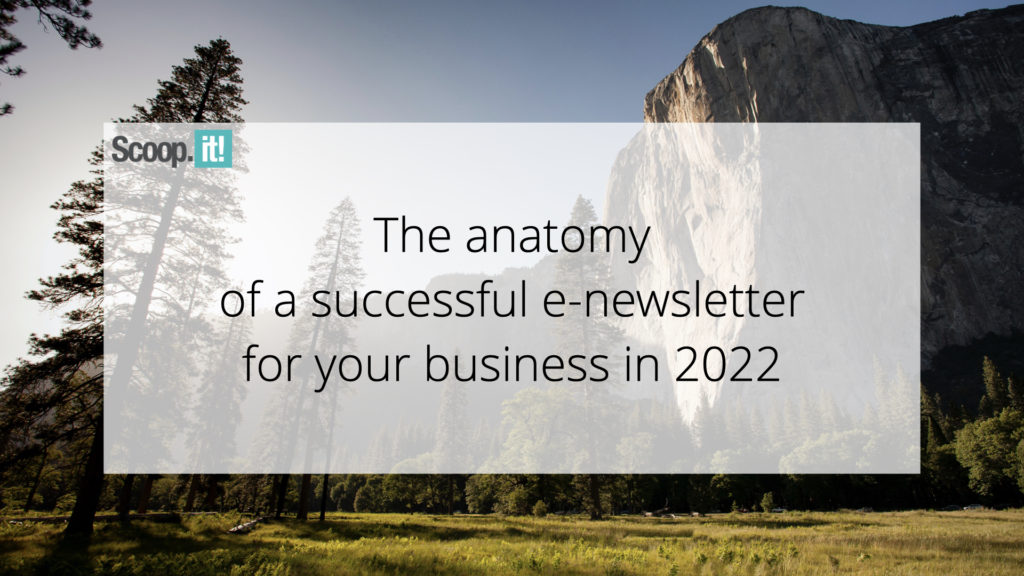How to Create a Landing Page (In 30 Minutes or Less)

Table of Contents
Have you ever wanted to launch a quick marketing campaign but didn’t want to go through the trouble of setting up or updating your own website?
Then you may already know about the solution to get that campaign going without needing to mess with your website at all – landing pages!
Whether you’re looking to sell products, generate leads, or promote an event, landing pages give you the full capability and flexibility to launch your campaign in a matter of moments.
Landing pages are marketers’ best friends. But only if you know how to create them efficiently. Not quite there? No need to worry! In this article, I’ll show you how you can create a highly-converting landing page from scratch in nine easy steps.
If you need a refresher or are looking for some extra tips, consider reading our article explaining what landing pages are (and how they’re different from your website), and this one detailing the landing page best practices you should follow if you want maximum results.
How to create a landing page in 9 easy steps
- Specify a goal for your landing page
- Research your market and competitors
- Research what appeals to you visually
- Choose your landing page builder
- Choose your web host
- Choose your domain name
- Add your content and customize the layout
- Connect your tech stack
- Preview and publish
1. Specify a goal for your landing page
If you want to build a landing page efficiently, you’ll want to first specify what goal your page will serve.
While landing pages can serve multiple purposes, marketers typically use them to achieve one of these three goals:
- To generate signups or leads
- To promote a product or service
- To generate click-throughs to another page
Once you know the goal you want to achieve, finding the right template and preparing the content that needs to go on your page will be much easier.

2. Research your market and competitors
After you’ve specified what goal your landing page will serve, it’s time to do some research on your market and competitors.
The goal of this research is to find out:
- What information your potential customers are interested in
- What content your competitors have been publishing to capture them
Keep an eye out for the language your target audience uses and questions they’re asking when talking about your topic. This will help you craft more compelling landing page copy and overcome any fears or objections your potential customers may have.
When looking up your competitors, note the type of information and content they’re using to drive conversions. See if anything stands out that will resonate with your audience, such as customer reviews, customer photos from social media, trusted logos, or a countdown timer increasing the sense of urgency.

3. Research what appeals to you visually
Now it’s time to find a template that’ll match your audience and help you achieve your goals.
There are three main ways of finding good landing page templates.
The most obvious one is to search for them on Google or Pinterest. To save some time, you can narrow down your search by specifying what type of landing page template you’re looking for. For example ebook landing page templates.

The second way is to go on a website like Envato Market or Template Monster. There, you’ll be able to filter your results by your business type, the content management system (CMS) you want to use to manage your landing page (e.g. WordPress), or individual features your page should have.

And finally, if you’re already thinking of using a particular landing page builder, you can view the landing pages available in their gallery.
This is often the best option if you’re less technical or want to create your landing page efficiently. Using these tools will let you skip the manual process of downloading, importing, and then updating your template every time something new comes up in WordPress or whatever other CMS you decide to use.
Below, you can see the free landing page templates available in the GetResponse Website Builder. They’re fast, modern, and you can fully customize them to match your brand, too.

4. Choose your landing page builder

Before we go any further, let me admit that it is, in fact, possible to create a landing page without an actual landing page builder.
If you’re a web developer or someone who’s got a knack for design and HTML/CSS, then you’ll be able to build a great landing page without the need for any external tools (you’ll still need to host your landing page somewhere). But I don’t recommend this approach, even if you’re techie.
The whole idea behind using landing pages in your marketing campaigns is to be able to publish them quickly. You wanna be able to create your landing page and drive traffic to it in moments, not months. A good landing page builder will help you create a landing page hassle-free and in no time at all.
Most landing page tools, including the GetResponse Free Website Builder, offer a variety of features that’ll help you set up landing pages swiftly and confidently. These include:
- Prebuilt landing templates
- Design and styling options
- Free hosting and SSL
- Mobile optimization
- Free stock photos
- A/B testing
- Performance metrics
- Optimization features for search engines
- Integrations with analytical tools, like Google Analytics
- Integrations with marketing tools, like webinar or email marketing software
To choose the best landing page builder for your business, I recommend that you look back at the results of your research in the previous steps and consider what other marketing tools you’re going to use along with your landing page.
You can create high-converting landing pages with any landing page tool. But you want to make sure that the platform you choose not only offers great landing page templates but is also user-friendly, and works well with your existing marketing tech stack (or that it fits with the one you want to create).
5. Choose your web host
Most landing page builders offer free hosting, so if you’ve decided to work with one of the top tools, you can skim through this section.
When you’re building a landing page on your own, you’ll also need to decide where it will be hosted, meaning where all your files and images will be stored.
Choosing the right hosting provider is important for a few reasons:
- Your hosting will affect the speed and performance of your landing page, which is key to ranking high in search engines.
- It can help you ensure that your landing page is secure and capable of withstanding any potential threats.
- It can help you back up your files and the whole landing page so that it doesn’t get lost due to unforeseen circumstances.
Having said this, I know that most marketers don’t build landing pages to have them rank high on Google. Instead, they publish these pages to convert traffic from marketing campaigns (most often paid ads) into leads or sales.
While organic ranking won’t be as crucial here, your landing page speed will still have an effect on your campaigns’ performance and your conversions. After all, these days, users are impatient. If your landing pages load slowly for them, it’s likely they won’t even consider your offer.
6. Choose your domain name

It’s time to pick a domain name – the URL – for your landing page.
For websites, the domain name is critical. It has to be trustworthy and memorable because most people will be typing it directly into their browser to access your page.
With landing pages, the domain name is somewhat less important. In many cases, marketers focus on driving traffic to their landing page from paid channels, and they’re less occupied with people typing in their domain name by hand.
Having said this, it won’t hurt you to have a good domain name, unless you specifically don’t want people entering your page in any other way than through a direct link. And even then, I’d argue that a good URL can have a positive impact on your paid ads performance.
So how do you select a domain name?
If you already have a website with your own URL (for example, website.com), you can publish your landing page under a so-called subfolder under your main domain (e.g. website.com/landing-page) or a subdomain (e.g. promo.website.com/landing-page).
This is a popular approach and also one we use at GetResponse to publish our landing pages. Using one subdomain, we’re able to publish an unlimited number of landing pages, just making sure that the subfolder part is unique.
Here’s an example of a landing page we recently used to promote one of our webinars – https://webinars.getresponse.com/get-your-business-noticed
If you don’t have a website or don’t want your landing page to be associated with your main page, you’ll need to register a new domain or use a free domain offered by your landing page tool.
Using GetResponse Website Builder as an example, this means your landing page URL could be assigned one of the following domains:
- YourCompanyName.grwebsite.com
- YourCompanyName.grweb.site
Keep in mind that some landing page builders will charge you for assigning your own custom domain. This isn’t the case with GetResponse, however, as we want your brand to shine, even if you’re using our free-forever account.

The process of assigning your own domain/subdomain to be used with your landing page tool is likely the most technical one we’ll discuss here. Thankfully, we’ve covered it in our detailed tutorial over here.
7. Add your content and customize the layout

It’s time to put all the pieces together and build that high-converting landing page of yours.
Select your landing page template and start customizing it using a drag-and-drop builder. You’ll want to make sure all the necessary elements are in place:
- An eye-catching heading and a supporting subheading
- Hero image along and other visuals referring to your offer and its context of use
- Landing page copy highlighting your unique selling proposition
- Call-to-action clearly indicating what the visitor should do on your page
- Social proof including customer reviews and testimonials
- A signup form or a contact form
- Trust symbols such as logos of companies you’ve worked with
- Additional elements such as countdown timers or popups that increase the sense of urgency
In addition, you should add your page title, meta description, and social sharing images that’ll appear when your landing page gets shared on social media sites like Facebook or LinkedIn.
Seeing how many elements go onto a simple landing page you may worry that this step will be complicated. It’s true that it step is critical, but it doesn’t mean it has to be hard.
My best advice is that you only customize your landing page content and don’t interfere with the layout too much. The reason for this is that most landing pages have been designed by people who specialize in design and UX and know a lot about what drives conversions.
I’ve seen far too many landing pages that don’t perform not because the content or the offer was not the right fit. But because the landing page didn’t provide a good visual story the visitors would intuitively follow.
That isn’t to say your landing page needs to look like a prebuilt template. It should still follow your brand’s visual identity, including custom illustrations, business logo, brand colors, fonts, etc. But it shouldn’t necessarily break landing page best practices or UX design rules.
8. Connect your tech stack
Now that you’re done designing your landing page, it’s time to connect it with your other marketing tools.
After all, you don’t want to start driving traffic to a page that doesn’t transfer your contacts’ information to your email marketing platform or CRM.
You’ll want to confirm that the following connections are in place:
- You’ve added your Google Analytics ID or GTM Container ID to the landing page so that you can track your visitors more precisely
- You’ve installed tracking pixels, like Facebook Pixel, so that you’ll be able to easily retarget visitors who don’t convert
- You’ve connected your opt-in form with your email marketing or marketing automation software so every new contact can automatically enter into one of your email sequences
- You’ve connected your opt-in form with your CRM so that your sales team will be able to quickly follow up with any promising leads

9. Preview and publish

You’re almost there! Before you publish your first landing page, do a last round of checks to make sure everything looks, feels, and works fine.
Here are some of the things I like to go over before I hit publish:
- The landing page looks great both on desktop and mobile devices
- It contains all the information I wanted to add and not some placeholder text
- All calls-to-action, links, and phone numbers are correct
- The page title, meta description, and social sharing image are filled out
- The signup form sends the contact information to my email marketing tool
- The email marketing tool automatically sends the welcome email along with the requested content
- And/or the thank you page contains the link to the requested content
Once you’ve gone over this list, you can confidently publish your new landing page. And in case you missed something or would like to make final changes, you don’t need to worry. All landing page creators or CMS’s will let you quickly edit your page even after it’s gone live.
Get inspired by these landing page templates

Now that you know how to create a landing page, there’s nothing stopping you from launching your marketing campaign in the next hour.
At first, it may seem that this process is a bit lengthy. But the more times you go through it the less time it’ll take you to publish your pages.
For instance, for every webinar campaign we run here at GetResponse (we do webinars every other week), we publish three individual pages – the webinar registration page, thank you page, and a web page that the attendees see after the event.
Here’s an example of one of these pages:

Most of the time, we reuse the same templates. This means all we have to do is change the copy, images, and make sure that the page is connected to the correct webinar.
All of that takes us about 30 minutes and that includes testing the whole setup.
Now imagine if we were to ask our web development team to launch three new pages for us, every two weeks.
Remember when I told you that landing pages are marketers’ best friends? That’s precisely what I meant.
So, are you ready to publish your first landing page today? If so, then consider taking the GetResponse Free Website Builder for a spin.
And if you’d like to see it in action first, go ahead and watch our quick video below.








